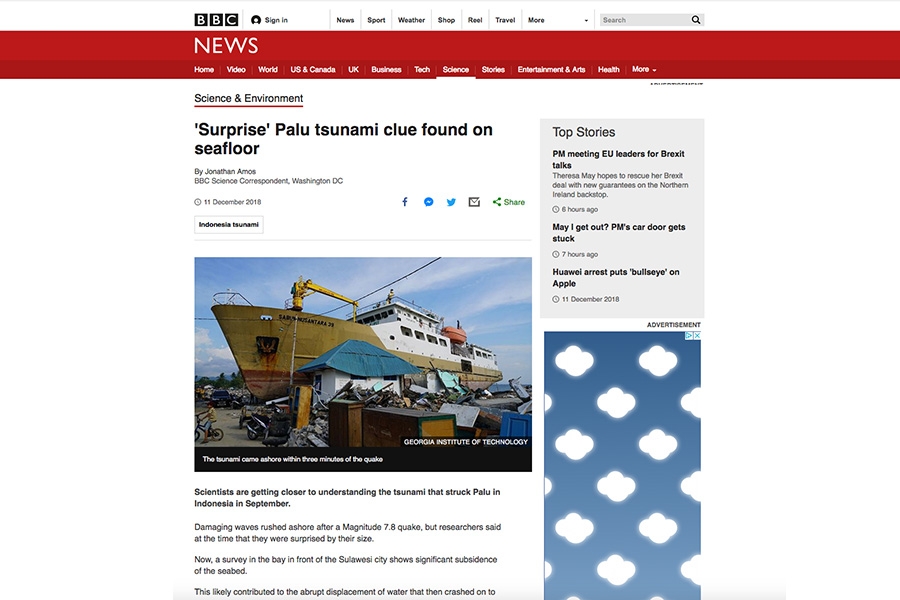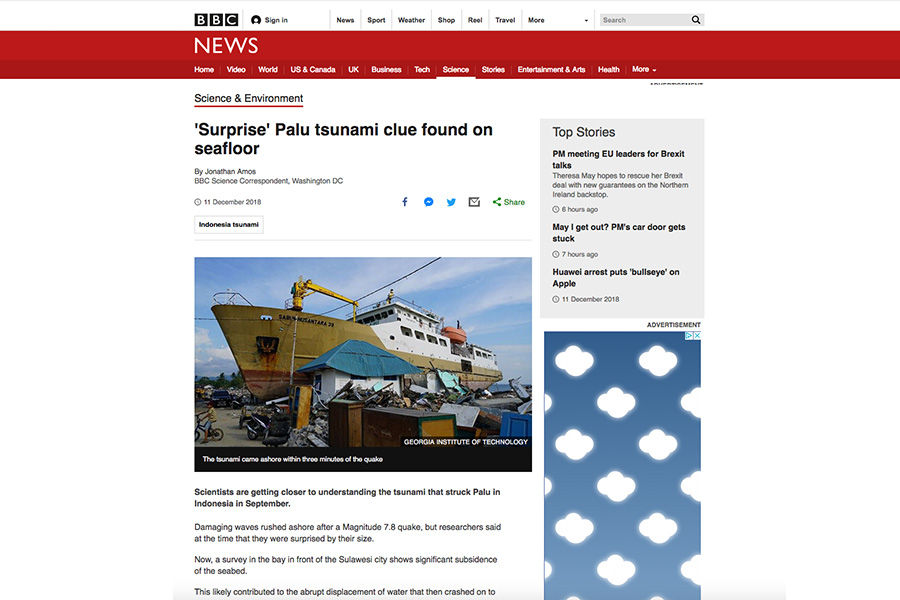
 |
Scientists have puzzled over the size of the tsunami that washed ashore in Palu, Indonesia, since it devastated the community in September.
Now researchers report they may have a new clue.
It appears the seafloor in the narrow bay that ends at Palu sank lower as a result of the earthquake offshore. The vertical drop, coupled with the earth’s crust shifting northward at the quake’s epicenter, could have led to the wave that pushed inland up to 400 meters (1,300 feet).
"When we overlap the bathymetric data from before and after, we can see that almost all of the area of the seafloor inside the bay subsides. And from this data, we can also observe [the movement] to the north. So, actually, we have a vertical and a horizontal displacement," said Udrekh Al Hanif from the Indonesian Agency for Assessment and Application of Technology.
He told BBC News the team still doesn’t know if that motion alone can account for the tsunami, which killed more than 2,000 people. Evidence suggests the earthquake caused several underwater landslides that could have been a factor, among other possibilities.
The scientists presented their findings at the annual meeting of the American Geophysical Union Dec. 10.
With the support of the National Science Foundation, Hermann Fritz helped lead the international research team that surveyed the coastline after the tsunami. He told the BBC, "This tsunami arrived very fast — within minutes.”
"That basically leaves no time for warnings. That's very different from Japan [in 2011] where there was an eternity of time — more than 30 minutes everywhere until the first person was killed by the tsunami,” said Fritz, a professor in the School of Civil and Environmental Engineering. “That's the challenge for these local tsunamis: people have to self-evacuate."
